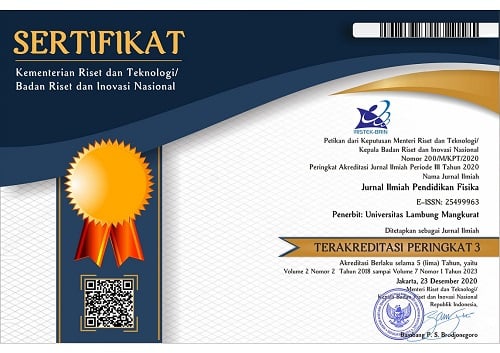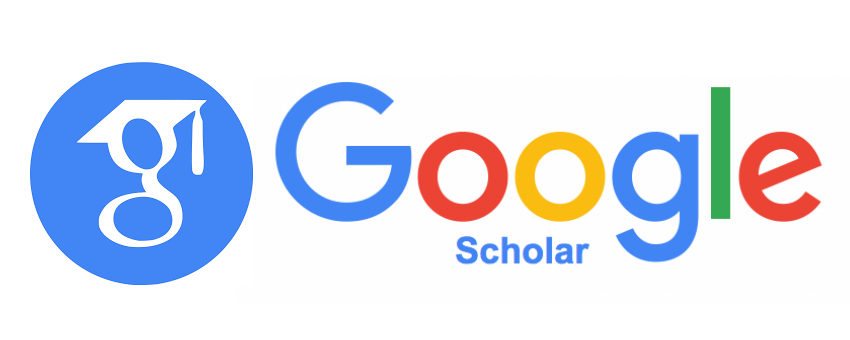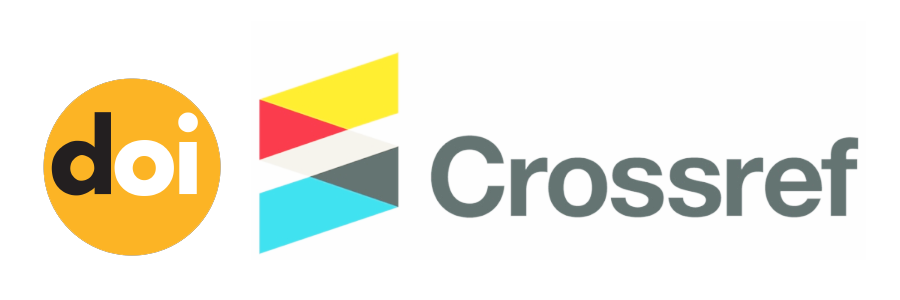Pengembangan E-Schoology Materi Getaran dan Gelombang untuk Meningkatkan Keterampilan Berpikir Kritis Siswa Sekolah Menengah Pertama
Abstract
Penelitian ini bertujuan untuk menghasilkan e-schoology materi getaran dan gelombang untuk meningkatkan keterampilan berpikir kritis siswa sekolah menengah pertama yang valid dan praktis. Penelitian ini menggunakan metode penelitian pengembangan dengan model pengembangan Alessi dan Trollip yang terdiri dari tiga tahapan yaitu perencanaan, desain, dan pengembangan. Sampel penelitian pada saat uji beta berjumlah tiga siswa yang diambil dengan teknik purposive sampling yang dapat mewakili siswa berkemampuan tinggi, sedang, dan rendah. Instrumen yang digunakan dalam penelitian ini adalah lembar validasi dan angket tanggapan siswa. Berdasarkan analisis kebutuhan pada tahap perencanaan diketahui bahwa 100% siswa memiliki smartphone dan sebanyak 72,50% mengakses internet setiap hari. Semua siswa pernah menggunakan e-learning seperti Telegram dan WhatsApps tetapi belum pernah menggunakan e-schoology dalam pembelajaran. Pada tahap desain dilakukan pembuatan flowchart dan storyboard sebagai pedoman dalam pengembangan e-schoology. Tahap pengembangan diawali dengan memproduksi prototipe pertama, melakukan uji alpa, dan melakukan uji beta. Dari hasil uji alpa yang kedua diperoleh persentase dapat diterima sebesar 100%. Persentase dapat diterima dari hasil uji beta yang kedua sebesar 100%. Berdasarkan hasil penelitian ini, e-schoology materi getaran dan gelombang yang dikembangkan telah valid dan praktis sehingga layak untuk digunakan dalam pembelajaran IPA di sekolah menengah pertama.
This study aims to produce e-Schoology material on vibrations and waves to improve the critical thinking skills of junior high school students that are valid and practical. This research uses development research methods. This research uses development research method with Alessi and Trollip development model which consists of three stages, namely planning, design, and development. The research sample in the beta test consisted of three students who were taken by purposive sampling technique that could represent students with high, medium, and low abilities. The instruments used in this study were validation sheets and student response questionnaires. Based on the needs analysis at the planning stage, it is known that 100% of students have smartphones and 72.50% access the internet every day. All students have used e-learning such as Telegram and WhatsApps but have never usede-schoology in learning. At the design stage, flowcharts and storyboards are made as guidelines in the development of e-schoology. The development phase begins with producing the first prototype, performing an alpha test, and performing a beta test. From the results of the second alpha test obtained an acceptable percentage of 100%. Percentage can be accepted from the results of the second beta test of 100%. Based on the results of this study, the e-Schoology of vibration and wave materials developed was valid and practical so that it was suitable for use in science learning in junior high schools.
Keywords
Full Text:
PDFReferences
Afzal, M. T., Safdar, A., & Ambreen, M. (2015). Teachers perceptions and needs towards the use of e-learning in teaching of physics at secondary level. American Journal of Educational Research, 3(8), 1045–1051. https://doi.org/10.12691/education-3-8-16
Alfonso, D, V. (2015). Evidence of critical thinking in high school humanities classrooms. GiST Education and Learning Research Journal, 11(11), 26–44. https://doi.org/10.26817/16925777.281
Al-Furqansyah, Y. A., Yuliani, H., & Syar, N. I. (2021). Analisis kebutuhan pengembangan media e- learning berbasis telegram pada pokok bahasan hukum newton di smp. Jurnal Ilmiah Pendidikan Fisika, 5(1), 62. https://doi.org/10.20527/jipf.v5i1.2718
Aldowah, H., Ghazal, S., Naufal Umar, I., & Muniandy, B. (2017). The impacts of demographic variables on technological and contextual challenges of e-learning implementation. Journal of Physics: Conference Series, 892(1). https://doi.org/10.1088/1742-6596/892/1/012013
Alessi, S.M., Trollip, S. . (2001). Multimedia for learning: Methods and development. 3rd ed. In Massachusetts: Allyn & Bacon (3rd ed.). A Pearson Educational Company.
Alyoussef, I. (2021). E-Learning system use during emergency: An empirical study during the covid-19 pandemic. Frontiers in Education, 6(June), 1–11. https://doi.org/10.3389/feduc.2021.677753
Amelia, R., & Gufron. (2018). E-learning design based on learning management system in web programming course. International Journal of Scientific and Technology Research, 7(9), 106–109.
Apriyana, K. F., Wirya, N., Parmiti, D. P.(2015). Pengembangan portal e-learning berbasis schoology pada mata pelajaran ips kelas viii di smpn 1 Banjarankan. E-Journal Edutech Universitas Pendidikan Ganesha, 3(1), 1–58.
Azhary, H. A., & Wiyono, K. (2020). Pengembangan e-learning materi fluida dinamis untuk mengembangkan keterampilan berpikir kreatif siswa sekolah menengah atas. Jurnal Pendidikan Fisika dan Teknologi, 6(1), 1. https://doi.org/10.29303/jpft.v6i1.1541
Biswas, S. (2013). Schoology-supported classroom management: A curriculum review. Northwest Journal of Teacher Education, 11(2), 0–10. https://doi.org/10.15760/nwjte.2013.11.2.12
Chaw, L. Y., & Tang, C. M. (2018). What makes learning management systems effective for learning? Journal of Educational Technology Systems, 47(2), 152–169. https://doi.org/10.1177/0047239518795828
Goda, Y., Yamada, M., Kato, H., Matsuda, T., Saito, Y., & Miyagawa, H. (2015). Procrastination and other learning behavioral types in e-learning and their relationship with learning outcomes. Learning and Individual Differences, 37, 72–80. https://doi.org/10.1016/j.lindif.2014.11.001
Handoko, H., & Waskito, W. (2018). Blended learning: Konsep dan penerapannya. LPTIK Universitas andalas. https://doi.org/10.25077/car.64.60
Hilyana, F. S., & Hakim, M. M. (2018). Integrating character education on physics courses with schoology-based e-learning. Journal of Information Technology Education: Research, 17, 577–593. https://doi.org/10.28945/4164
Hut, R. W., Pols, C. F. J., & Verschuur, D. J. (2020). Teaching a hands-on course during corona lockdown: From problems to opportunities. Physics Education, 55(6). https://doi.org/10.1088/1361-6552/abb06a
Irawan, V. T., Sutadji, E., & Widiyanti. (2017). Blended learning based on schoology: Effort of improvement learning outcome and practicum chance in vocational high school. Cogent Education, 4(1). https://doi.org/10.1080/2331186X.2017.1282031
Klement, M., & Dostál, J. (2014). Students and e-learning: A longitudinal research study into university students’ opinions on e-learning. Procedia - Social and Behavioral Sciences, 128(April), 175–180. https://doi.org/10.1016/j.sbspro.2014.03.139
Kurilovas, E., Kubilinskiene, S., & Dagiene, V. (2014). Web 3.0 - Based personalisation of learning objects in virtual learning environments. Computers in Human Behavior, 30(January), 654–662. https://doi.org/10.1016/j.chb.2013.07.039
Luliyarti, D. S., Jumadi, & Astuti, D. P. (2020). Application of e-handout with Schoology-based PhET simulations to improve students’ visual representation ability on optical material. Journal of Physics: Conference Series, 1440(1). https://doi.org/10.1088/1742-6596/1440/1/012058
Marks, A., AL-Ali, M., & Rietsema, K. (2016). Learning management systems: A Shift Toward learning and academic analytics. In International Journal of Emerging Technologies in Learning (Vol. 11, Issue 4, pp. 77–82). https://doi.org/10.3991/ijet.v11i04.5419
Misbah, M., Pratama, W. A., Hartini, S., & Dewantara, D. (2018). Pengembangan e-learning berbasis schoology pada materi impuls dan momentum untuk melatihkan literasi digital. PSEJ (Pancasakti Science Education Journal), 3(2), 109. https://doi.org/10.24905/psej.v3i2.1067
Nordin, N., Samsudin, M. A., & Harun, A. H. (2017). Teaching renewable energy using online PBL in investigating its effect on behaviour towards energy conservation among Malaysian students: ANOVA repeated measures approach. Physics Education, 52(1), 15001. https://doi.org/10.1088/0031-9120/52/1/015001
Ozdamli, F., & Turan, B. (2017). Effects of a Technology Supported Project Based Learning (TS-PBL) approach on the success of a mobile application development course and the students’ opinions. TEM Journal, 6(2), 258–264. https://doi.org/10.18421/TEM62-10
Patmawati, T., & Kholiq, A. (2021). Development of 3D E-FIST as A teaching material for e-learning on temperature and heat materials. Jurnal Ilmiah Pendidikan Fisika, 5(1), 70. https://doi.org/10.20527/jipf.v5i1.2854
Purwanto, Y. P. B., Masykuri, M., Soeparmi, & Elisanti, E. (2019). Analysis of science students critical thinking skill in junior high school. Journal of Physics: Conference Series, 1233(1). https://doi.org/10.1088/1742-6596/1233/1/012086
Puspendik. (2019). Laporan Hasil UN. https://hasilun.puspendik.kemdikbud.go.id/#2019
Suana, W., Maharta, N., Nyeneng, I. D. P., & Wahyuni, S. (2017). Design and implementation of Schoology-based blended learning media for basic Physics I course. Jurnal Pendidikan IPA Indonesia, 6(1), 170–178. https://doi.org/10.15294/jpii.v6i1.8648
Sulisworo, D., & Toifur, M. (2016). The role of mobile learning on the learning environment shifting at high school in Indonesia. International Journal of Mobile Learning and Organisation, 10(3), 159–170. https://doi.org/10.1504/IJMLO.2016.077864
Tolino, F., Jumadi, & Astuti, D. P. (2020). Students’ verbal communication skills using e-handout aided Schoology with problem-based learning model on lup-optic topics. Journal of Physics: Conference Series, 1440(1). https://doi.org/10.1088/1742-6596/1440/1/012033
Tran, T., Dao, L. T., Van Nguyen, H., & La, M. D. (2020). The designing of the division course in E-learning system that support the math self-learning to high school students in vietnam. International Journal of Scientific and Technology Research, 9(3), 973–980.
Vershitskaya, E. R., Mikhaylova, A. V., Gilmanshina, S. I., Dorozhkin, E. M., & Epaneshnikov, V. V. (2019). resent-day management of universities in Russia: Prospects and challenges of e-learning. Education and Information Technologies, 25(1), 611–621. https://doi.org/10.1007/s10639-019-09978-0
Wijayanti, R. T., Chrisnawati, H. E., & Fitriana, L. (2019). Blended learning with schoology in mathematics: Student’s activity and their outcome. Journal of Physics: Conference Series, 1318(1). https://doi.org/10.1088/1742-6596/1318/1/012002
Wiyono, K., Ariska, M., & Khoirunnisa, R. (2020). Moodle-based e-learning model for critical thinking in the lesson of electromagnetic induction. Jurnal Penelitian & Pengembangan Pendidikan Fisika, 6(2), 237–246.
Wiyono, K., Pasaribu, A., Afriani, A., Pratiwi, S., & Zakiyah, S. (2021). Onlinei instruction : A survey of high school physics teachers. Advances in Social Science, Education and Humanities Research, 513, 767–774.
Yanuschik, O. V., Pakhomova, E. G., & Batbold, K. (2015). E-learning as a Way to Improve the Quality of Educational for International Students. Procedia-Social and Behavioral Sciences, 215(June), 147–155. https://doi.org/10.1016/j.sbspro.2015.11.607
Zaric, N., Scepanović, S., Vujicic, T., Ljucovic, J., & Davcev, D. (2017). The model for gamification of e-learning in higher education based on learning styles. In International Conference on ICT Innovations, 278, 265-273. Springer, Cham.
https://doi.org/10.1007/978-3-319-67597-8
DOI: https://doi.org/10.20527/jipf.v5i2.3759
Refbacks
- There are currently no refbacks.
Indexed by: Jurnal Ilmiah Pendidikan Fisika is licensed under a creative commons attribution-share alike 4.0 international license
Statistics Counter |
















